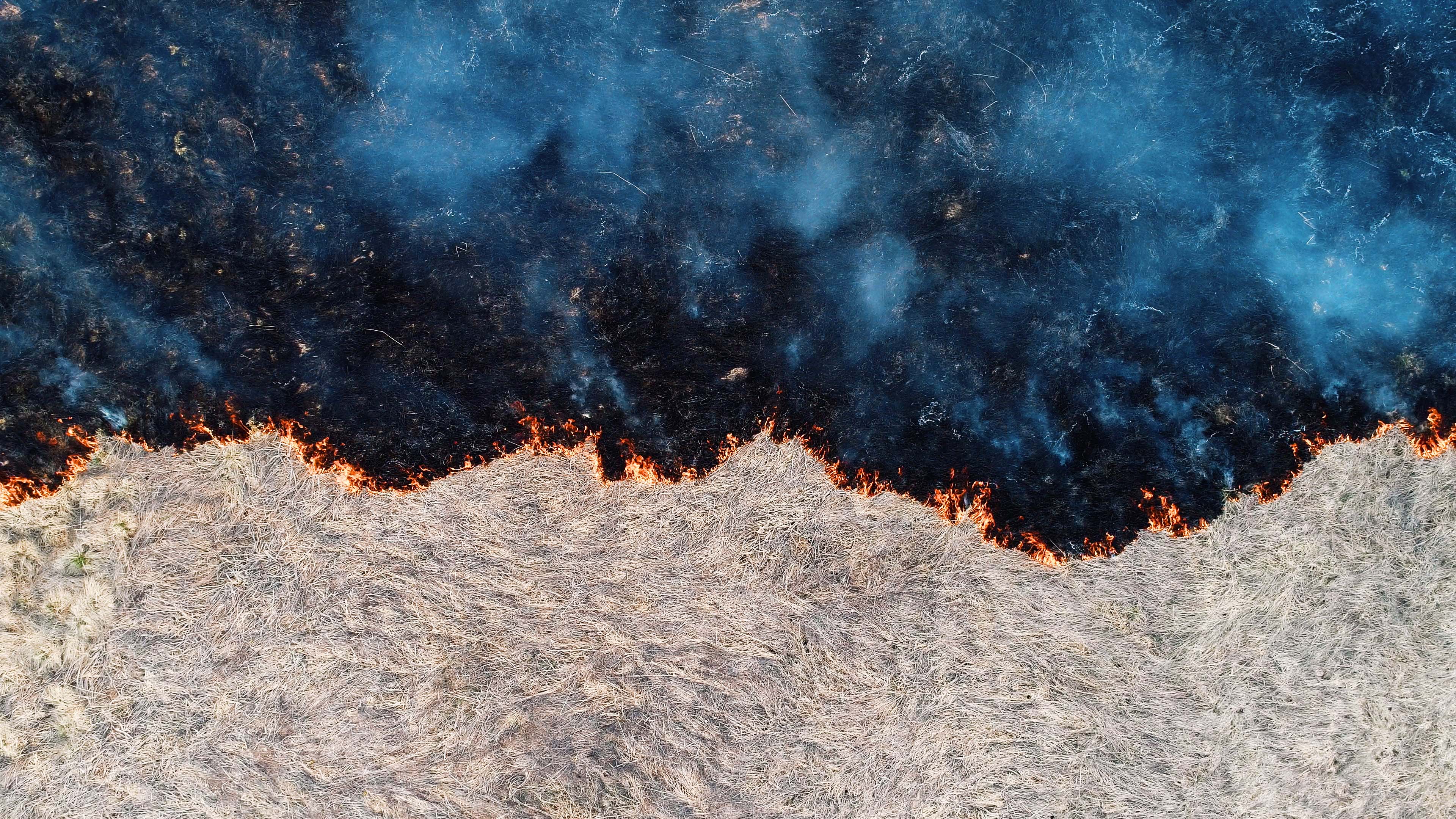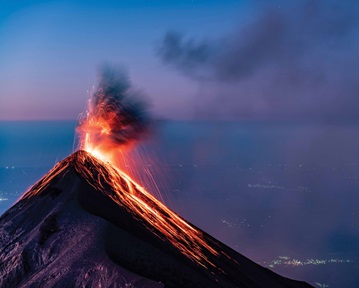Rethinking risk and resilience
Multidisciplinary experts in NTU’s Institute of Catastrophe Risk Management assess economic and financial risks of natural and non-traditional disasters to strengthen the resiliency of the region.

By driving research on different kinds of risks, experts from NTU's Institute of Catastrophe Risk Management (ICRM) are helping Asia address the challenges of the 21st century
2020 marked the end of a decade defined by natural disasters in the Asia-Pacific region. From torrential rains to collapsed buildings, scenes from disasters like the 2011 Great Tohoku earthquake and the resulting tsunami and Fukushima Daiichi nuclear meltdown in Japan, as well as 2013 super typhoon Haiyan in the Philippines, are seared into the region’s memory.
With earthquakes, tsunamis and even volcanic eruptions aplenty, it is no surprise that Asia accounted for 44% of the world’s total number of natural disasters from 2010 to 2019. Due to climate change, more of these natural disasters are likely to come. Despite this, the overall awareness of risks brought by such events among Asia’s population is generally low. Without a culture of awareness and preparedness, the region will continue to be trapped in a vicious cycle of disaster and recovery.
As the first multidisciplinary risk management research institute in Asia, the NTU Institute of Catastrophe Risk Management (ICRM) seeks to help the community better understand the risk related to natural and non-traditional disasters alike. ICRM achieves its goal by undertaking research projects related to catastrophe risk that require expertise from domains as diverse as engineering and economics.
A recap on risk
The terms risk, hazard and disaster are used interchangeably outside of academic settings, but it is important to note that they all refer to different concepts. For instance, geological phenomena like typhoons and earthquakes are primarily considered natural hazards.
“When these events create a significant loss of life or property, we call them natural disasters,” explains Prof Pan Tso-Chien, the founding Executive Director of ICRM. This means that not all natural hazards evolve to become disasters. “If nobody is there when the hazard happens, there’s no risk,” he added. “It’s just an event that happens.”
Risk, therefore, arises not just from the hazard but also from the lives, assets, infrastructure and even ecosystems in harm’s way—otherwise known as exposure. By managing exposure through evacuations or strengthening buildings, risk can be reduced and disaster outcomes minimised.
“At ICRM, we understand the risk, then quantify and communicate it,” says Prof Pan. “But we don’t make the decisions. The decisions will be made by the owners of the asset or exposure, based on their understanding of the risk information we give them.”
Calculating catastrophic consequences
Given the high frequency of disasters coupled with the region’s low risk awareness, Asia stands to be disproportionately affected by natural disasters in terms of economic losses and casualties. This dim outlook is exacerbated by the poor quality of data that is available for catastrophe risk quantification, preventing decision makers from enacting informed policies to minimise disaster risk.
Accordingly, ICRM’s projects have largely revolved around natural disasters since its founding a decade ago. In 2015, the institute introduced the ICRM-CAT risk modelling platform, described by Prof Pan as a “plug-and-play” model that can be used to analyse major urban centres in Southeast Asia for earthquake and flood risks. By plugging data like daily precipitation and insurance claims into ICRM-CAT, the platform generates financial metrics that insurance providers can use when assessing losses from disasters.
To support ICRM-CAT as well as address existing gaps in data and modelling in Asia, the Natural Catastrophe Data and Analytics Exchange (NatCatDAX) platform was set up in 2017. Pulling data from various domains like national governments, local and international insurance companies, historical archives and even multinational companies, the platform consists of two databases on economic exposure and economic loss. “The economic exposure database maps out the assets that we have and where they are,” explains Prof Pan. “Meanwhile, economic loss pertains to what was damaged.”
The resulting data from the two platforms then feed into ICRM’s third project, known as the ASEAN Disaster Risk Financing and Insurance Phase 2 (ADRFI-2). Launched in conjunction with the ASEAN Secretariat, the project aims to strengthen the financial resiliency of ASEAN member states when natural disasters occur.
“After disasters, there’s always a need for resettlement and reconstruction,” says Prof Pan. “This needs money.” As less developed countries often depend greatly on international donations, information on risk and exposure would enable governments to identify the assets that urgently require protection and assess the financial resources needed for post-disaster relief. ICRM has since started working with disaster-prone countries like the Philippines, Indonesia and Thailand, and will soon add Laos, Myanmar and Cambodia into the mix.
Fast-forward to the future
Natural disasters aren’t the only challenges that Asia faces. It has the highest number of megacities globally, such as the bustling metropolises of Shanghai and Delhi. But rapid urbanisation comes at a cost: complexity. So interlinked are infrastructure systems like transport and power in these cities that any shock could easily lead to cascading failures. As large swathes of the population depend on these systems for survival, it is crucial to build the resilience of Asia’s cities.
Since 2014, ICRM has been doing exactly that through its Future Resilient Systems programme, in partnership with ETH Zürich, a public research university in Switzerland. Their primary output from the first phase was a resilience framework to help governments identify the resources and policies needed to rebuild better after disasters, explains Prof Pan. “In phase two, we’d like to apply this framework to high-density urban systems like Singapore.”
While ICRM’s research efforts have been complicated by the ongoing coronavirus pandemic, there’s a silver lining to the situation. “We’ve looked into infectious diseases before, but never on the scale of COVID-19 today,” says Prof Pan. While ICRM has largely focused on natural disasters and urban systems thus far, the next phases of their projects could factor in the effect of infectious diseases, he adds. “We may have to place a higher priority on infectious diseases more than ever before.”
Ultimately, institutes like ICRM help communities, governments and organisations make sense of and address the different kinds of risk we face every day. Though largely unseen, their research efforts are the reason most of us can sleep soundly at night.














/enri-thumbnails/careeropportunities1f0caf1c-a12d-479c-be7c-3c04e085c617.tmb-mega-menu.jpg?Culture=en&sfvrsn=d7261e3b_1)

/cradle-thumbnails/research-capabilities1516d0ba63aa44f0b4ee77a8c05263b2.tmb-mega-menu.jpg?Culture=en&sfvrsn=1bc94f8_1)

7e6fdc03-9018-4d08-9a98-8a21acbc37ba.tmb-mega-menu.jpg?Culture=en&sfvrsn=7deaf618_1)






